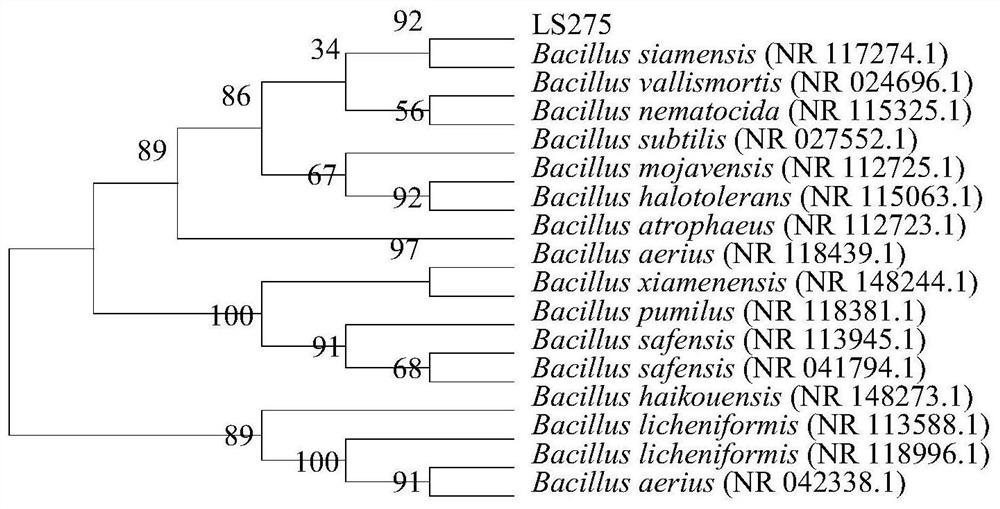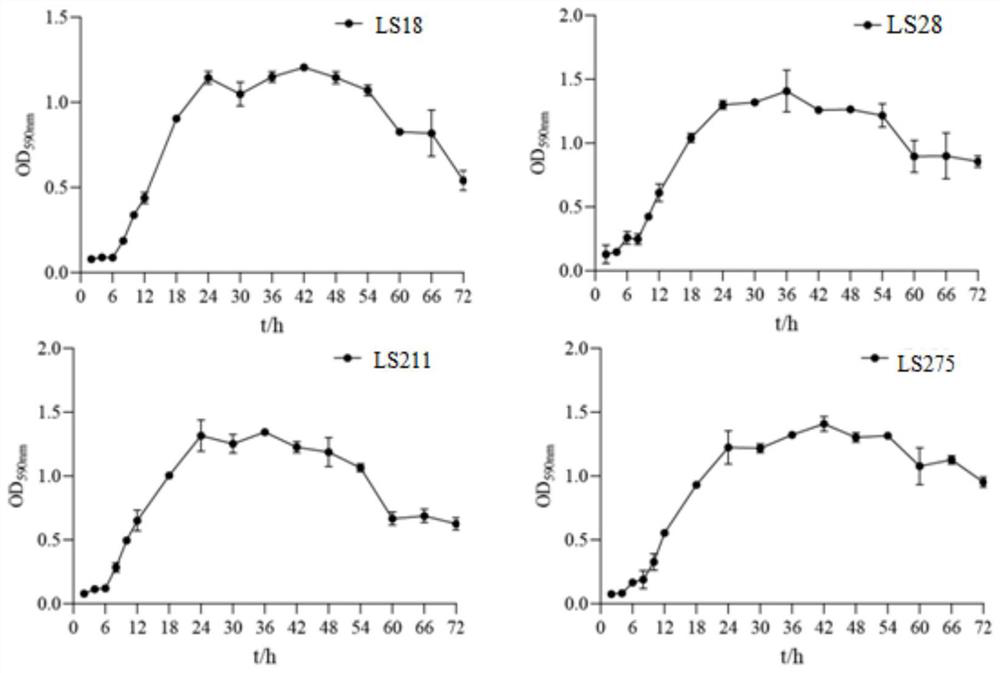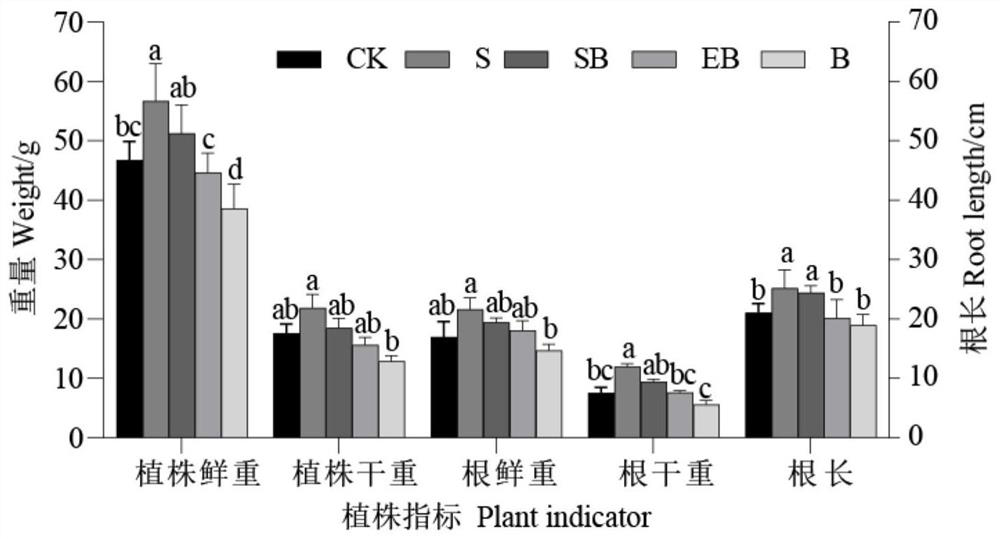Multifunctional bacillus siamensis and application thereof
A technology of bacillus and bacteria, applied in the direction of application, bacteria, fungicides, etc.
- Summary
- Abstract
- Description
- Claims
- Application Information
AI Technical Summary
Problems solved by technology
Method used
Image
Examples
Embodiment 1
[0019] Isolation and identification of embodiment 1 Bacillus siamese LS275
[0020] 1. Source of soil samples
[0021] The soil was taken from the rhizosphere soil and non-rhizosphere soil of oil peony plants with root rot in Changzhi area, Shanxi Province. Uproot the plant and shake it off gently. The large piece of soil that falls is the non-rhizosphere soil, and the soil that still sticks to the root is the rhizosphere soil. The samples of every 5 plants are mixed into one soil sample, and the soil is collected into sterile Bags, labeled and numbered, brought back to the laboratory and stored in a 4°C refrigerator.
[0022] 2. Isolation of Bacillus strains
[0023] Take 10g of soil samples in 90mL of distilled water, place in a constant temperature shaking incubator for 30 minutes, and bathe in a water bath at 85°C for 30 minutes to kill most of the non-spore bacteria, let it stand, and dilute the supernatant to 10 -3 , 10 -4 , 10 -5concentration. Take 100 μL of the d...
Embodiment 2
[0043] Example 2 Determination of the growth-promoting function of Bacillus siamese LS275
[0044] Microorganisms with plant growth-promoting effects generally produce certain growth-promoting factors and secrete them into the environment, thereby promoting plant growth. Under laboratory conditions, the growth-promoting effect on plants can be judged by determining whether microorganisms produce indole-3-acetic acid (IAA), siderophore and ACC deaminase.
[0045] 1. Identification of iron carrier capacity
[0046] The activated antagonistic bacteria were inoculated in CAS medium and cultured at 28°C for 48 hours. If there was an orange-yellow transparent circle around the biocontrol strain, it indicated that it had the ability to produce siderophore, otherwise it did not (Zhan Shoufa et al., 2017).
[0047] 2. Functional identification of IAA (indole acetic acid) production
[0048]Add L-tryptophan to the liquid LB and Gao’s No. 1 medium to make the content reach 2.5mmol / L, i...
Embodiment 3
[0067] Growth and Colonization Ability of Embodiment 3 Bacillus siamese LS275
[0068] 1. Determination of growth characteristics: take Bacillus siamese LS275 seed solution and inoculate it in 20mL liquid LB medium with 1% inoculum, repeat 3 times, cultivate it in a shaker at 37°C and 120r / min, respectively at 2 and 4 , 6, 8, 10, 12, 18, 24, 30, 36, 42, 48, 54, 60, 66, and 72h to take the bacterial liquid, and use a microplate reader to measure the absorbance value (OD 590 ), with the other 2 strains of Bacillus siamese LS28, LS211 and 1 strain of Bacillus subtilis LS18 obtained through simultaneous screening as controls, the growth characteristics were measured. For the growth curves of the 4 strains of antagonistic bacteria, see figure 2 . It can be seen from the figure that the four strains of biocontrol bacteria all entered the logarithmic phase at 6-8 hours, entered the stable phase at 24 hours, and entered the decay period at 54 hours. The OD value of LS18 was the low...
PUM
 Login to View More
Login to View More Abstract
Description
Claims
Application Information
 Login to View More
Login to View More - R&D
- Intellectual Property
- Life Sciences
- Materials
- Tech Scout
- Unparalleled Data Quality
- Higher Quality Content
- 60% Fewer Hallucinations
Browse by: Latest US Patents, China's latest patents, Technical Efficacy Thesaurus, Application Domain, Technology Topic, Popular Technical Reports.
© 2025 PatSnap. All rights reserved.Legal|Privacy policy|Modern Slavery Act Transparency Statement|Sitemap|About US| Contact US: help@patsnap.com



